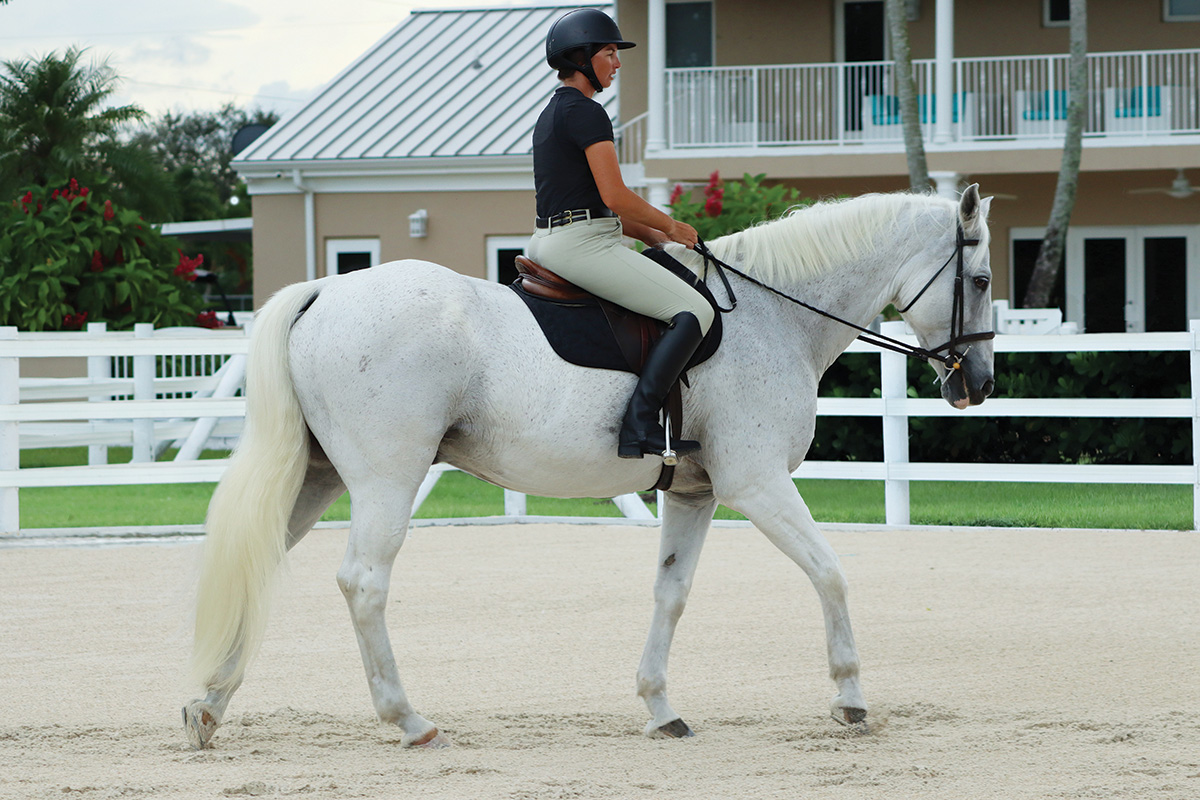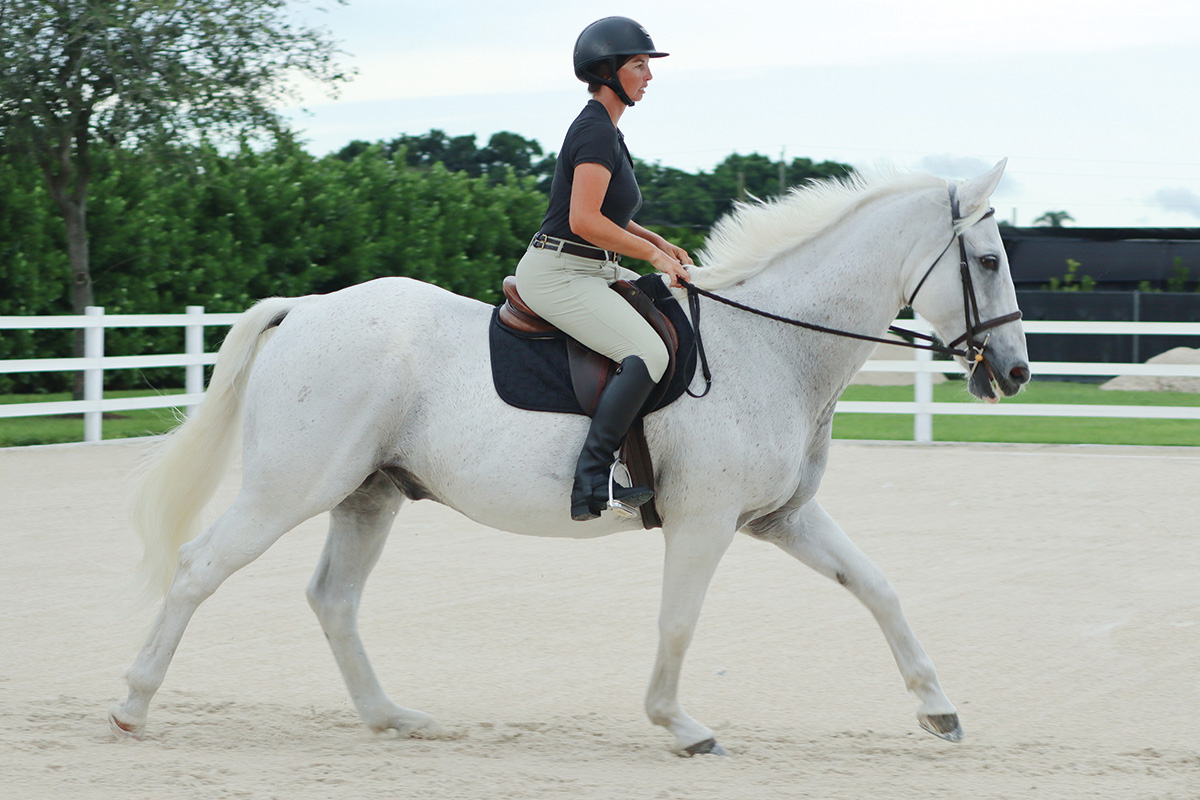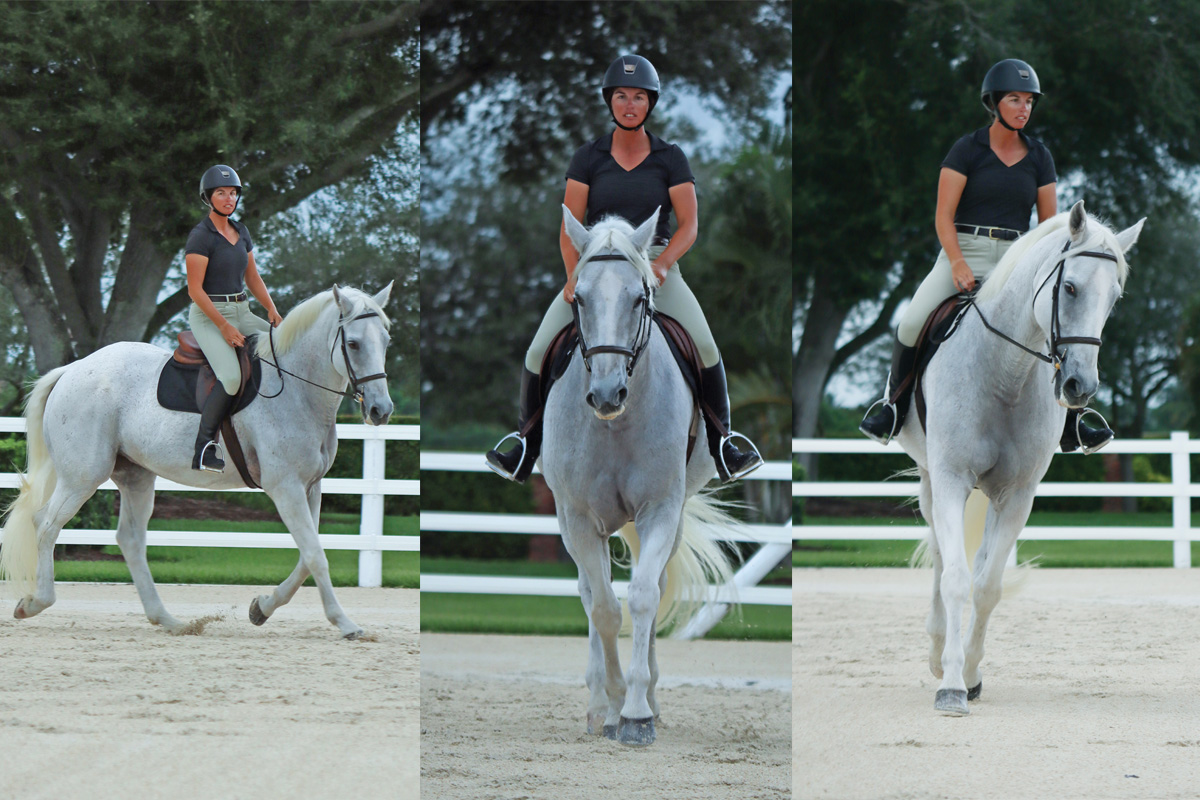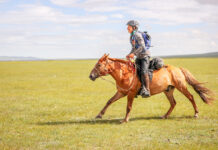
Choppy gait, gaping jaw, and bulging muscles on the underside of the neck: As riders and handlers, we all recognize the signs of tension in our horses, but not everyone understands how to help their horses soften and relax under saddle.
The following exercises focus on connecting your horse from back to front so that his whole body is working together to move him, rather than overloading one muscle group. When the weight of the load is shared, it becomes less stressful to manage, but the horse needs help understanding how to achieve this and get relaxed.
Once the whole body is warm and working together, the tense area will follow suit. It’s important to have a peaceful frame of mind when riding these exercises, remembering that your horse wants to understand the exercise and do the right thing. Whether your horse carries tension in his back, neck, poll, or jaw, you will see and feel it melt away.
The Onion
This is a great exercise incorporating concentric circles (those that share the same center). It can be ridden at the walk, trot, or canter, but be aware that it’s hard work for your horse and shouldn’t be done for long periods of time.
Start on a 20-meter circle. Now imagine the layers of an onion, evenly spaced and just inside of one another. Once you have completed one circle, it’s time to move inward to the next layer. Continue this until you have reached the smallest circle your horse is comfortable with. I usually find it beneficial to drop to the sitting trot once I reach the center.
Whether you are riding a small circle or your horse is advanced enough to be in a turn on the haunches or pirouette, as soon as you feel him sit on his haunches and lift his front end for a few steps, start to retrace your steps back out through the layers of the onion.
Be sure to catch your horse with your outside leg in case he starts to drift too far in response to your inside leg that is asking him to move out. A trot on a long rein after this exercise generally yields some great stretching through the topline.
Once your horse understands the feeling of pushing from behind and suppling through his ribcage, the counter-canter (cantering purposely on the wrong lead) is a great exercise to try. Success comes from your horse responding to your outside leg by shifting weight onto his inside hind to prevent a change of lead.

Other productive exercises include shoulder-fore (a shoulder-in ridden with less bend angle through the spine to move the shoulders off the track) and leg-yield (moving forward and sideways with a straight spine and slight flexion at the poll).
Figure-8
Riders consider a simple figure-8 at the trot to be a common and simple school figure, but there is actually quite a bit of work involved for the horse! The circle portions of the eight, especially when ridden on a smaller scale, require the horse to activate a number of muscles.
When ridden properly, your inside leg gently tells the horse to step out every stride, leading him to lift and cross over with the inside hind leg. This will cause him to engage his abdominals and back, then soften through the ribcage. When your horse is supple from withers to tail, it becomes much easier to open the inside rein and show him how to relax his neck down and flex gently in the direction of the circle.

You will need to use your outside leg and occasional half-halts on the outside rein to remind your horse of the boundaries of the circle and to encourage him to drive through his outside hind leg. As your horse changes direction through the center, he must shift his weight to the center for a few strides and change everything to the opposing side.
When ridden repeatedly, your horse will begin to soften and relax under saddle even more, anticipating the change of direction and becoming fluid in his change of bend from nose to tail.
The key to relaxation is to warm up your horse with his body mechanics in mind and without force or confrontation. Once this is achieved, his flexibility will improve, the tension will melt away, and you will be well on your way to maximizing his potential as an athlete.
This article about how to get your horse to relax under saddle appeared in the January/February 2022 issue of Horse Illustrated magazine. Click here to subscribe!





